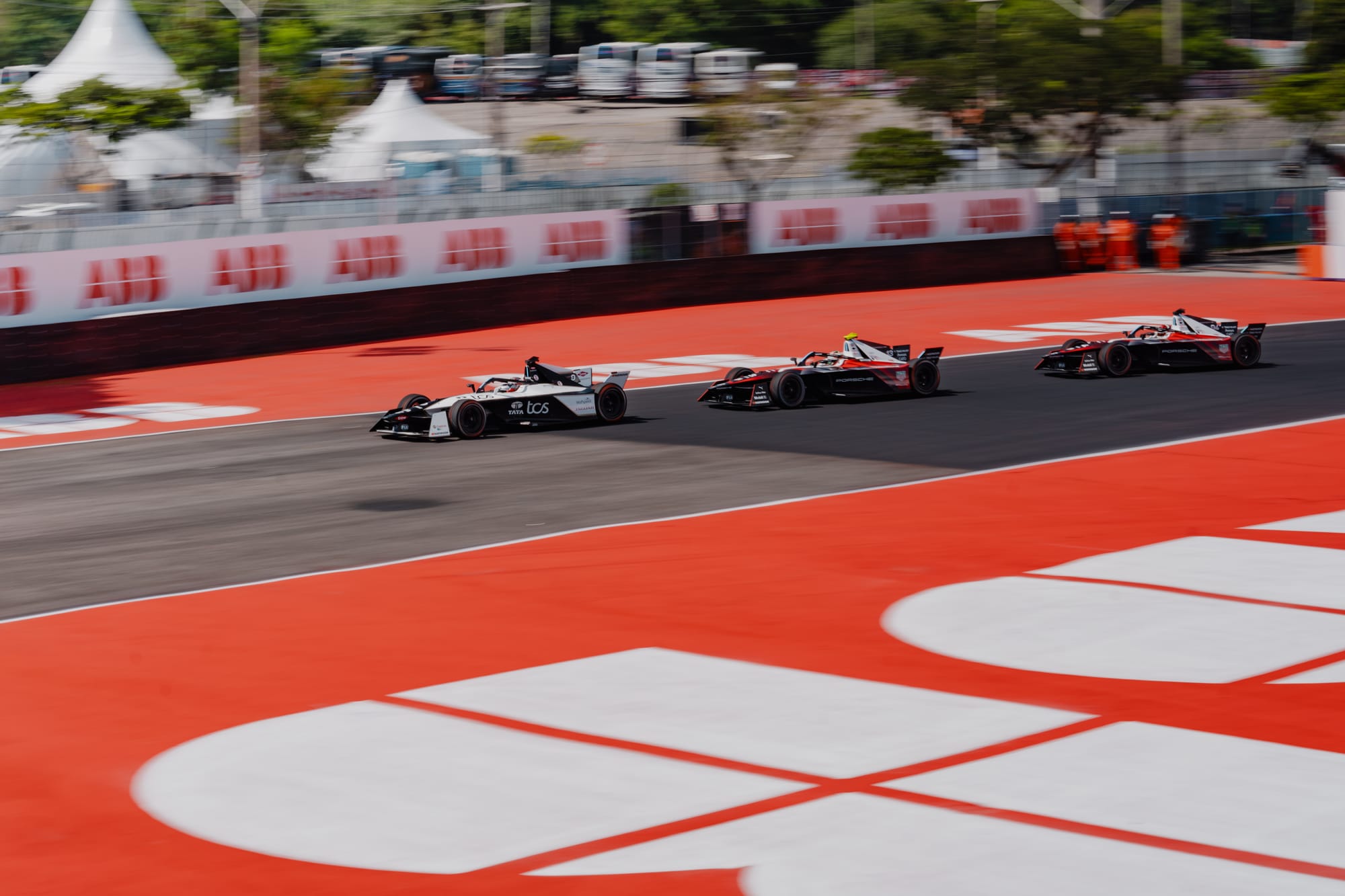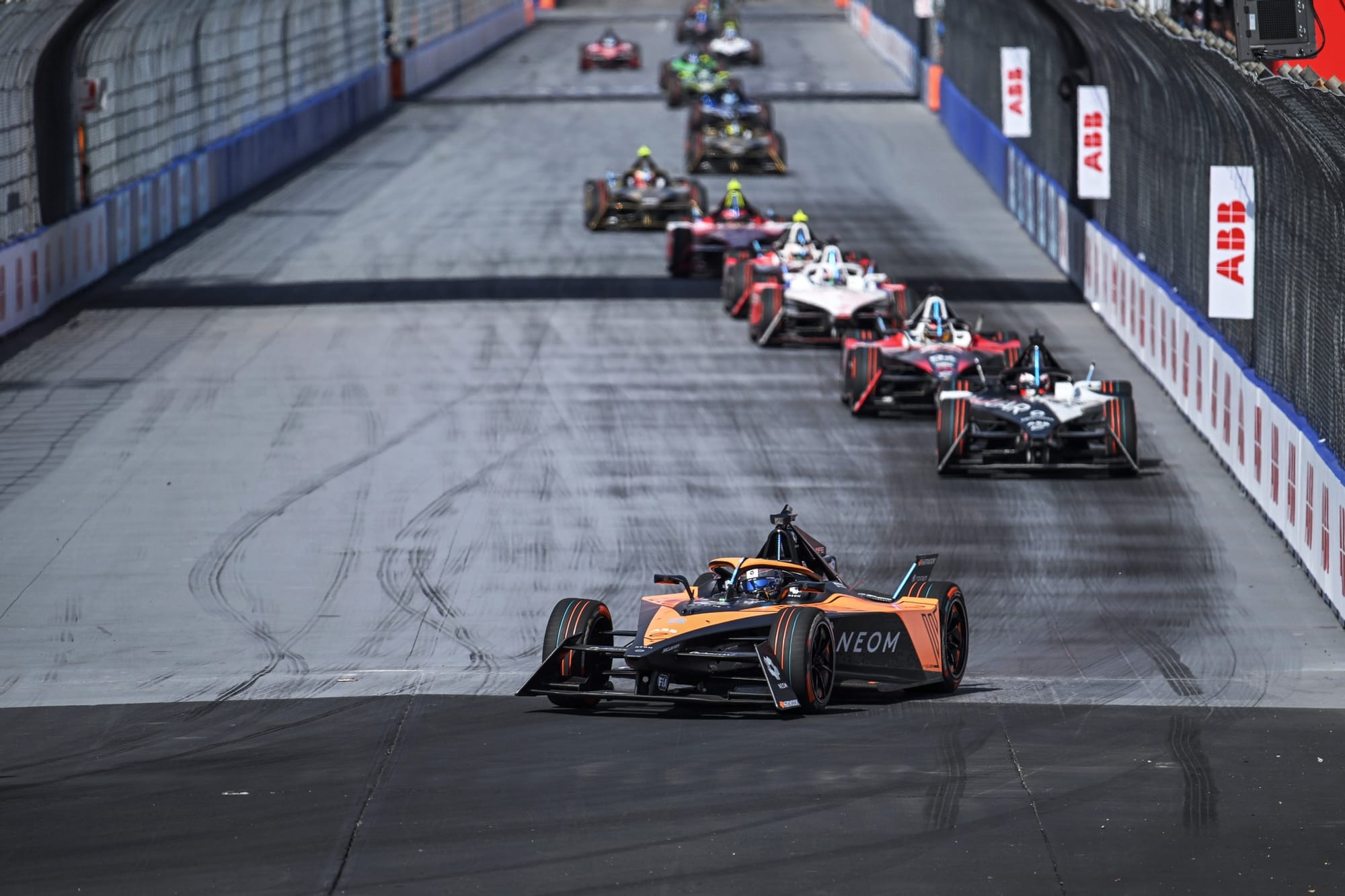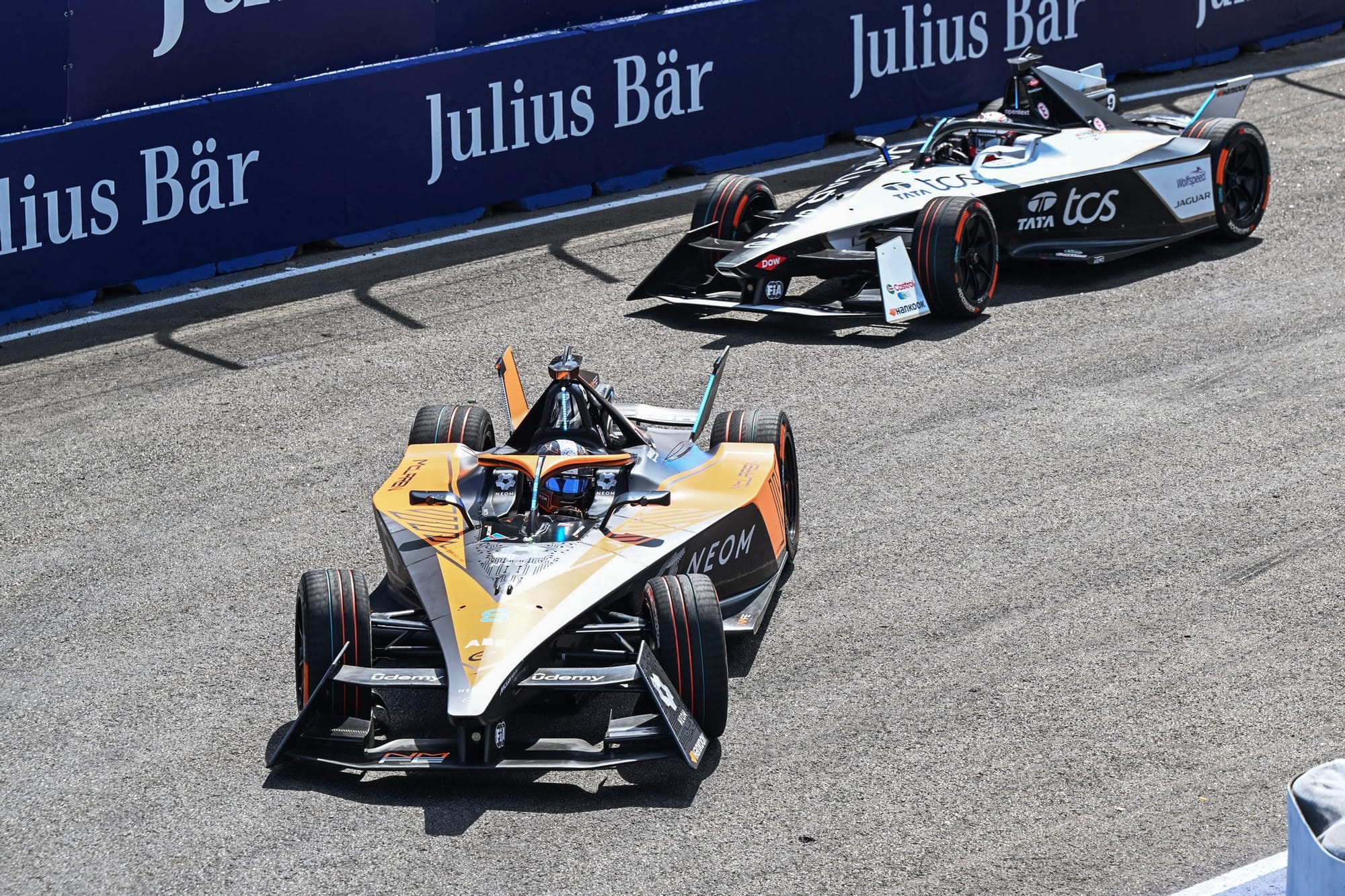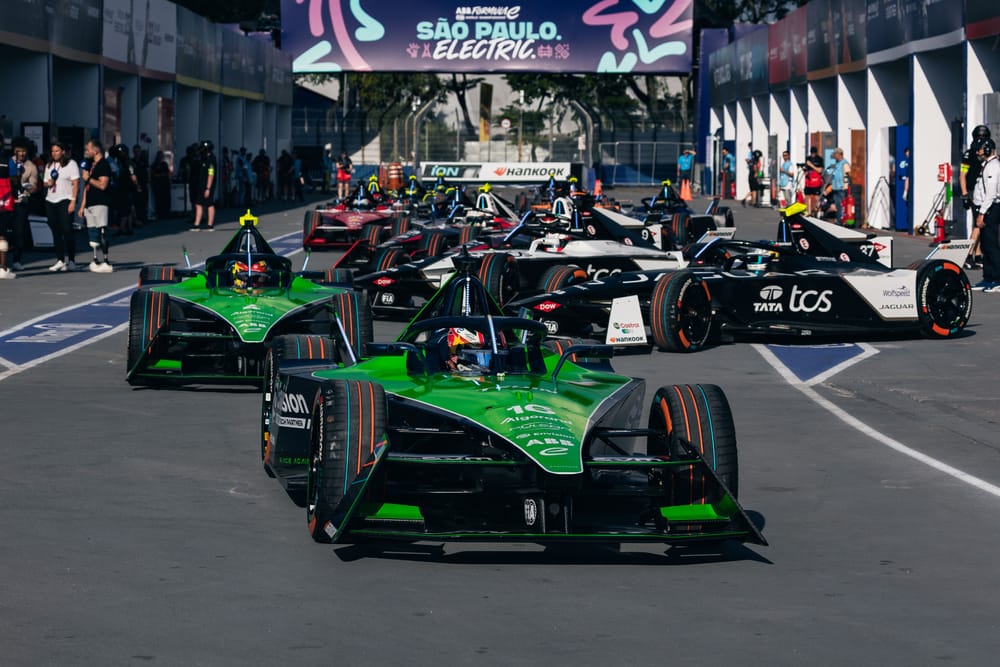until Abu Dhabi Autonomous Racing League

The rhythm of Formula E had been a bit off-kilter in 2024 until it came alive and danced a spectacular pulsing beat in the high-speed amphitheatre of the Anhembi Sambadrome in Sao Paulo last Saturday afternoon.
A grandstand finish involving the top five cars, of which there were three manufacturers and four teams involved, a spectacular shunt for the points leader triggering nil points and more passes than any given 90 minutes of Declan Rice’s life, ensured a race to relish and remember.
THIS MOMENT. 🤯
— Formula E (@FIAFormulaE) March 16, 2024
This is one of the greatest overtakes in Formula E history and we will not be told otherwise. #SaoPauloEPrix@SamBirdOfficial 👏 pic.twitter.com/gFENTppncK
It was a hothouse atmosphere too, albeit a slightly surreal one. It encompassed Bernie Ecclestone, Emerson Fittipaldi and Felipe Massa visiting a paddock that through an enforced seven-week absence had to find its mojo quickly again. And it did so beautifully.
There was a feeling of a quick re-birth in Sao Paulo and it manifested itself into a beautiful hellscape of a race for the neutral. It was by no means spectacular from the very start though. That was due to the pot-boiler aesthetic of the energy-demanding make-up of this particular challenge.
A 1.5kWh trim of the usable energy from last year's inaugural race, combined with the enhanced efficiency derived from the teams of their technical packages now, brought forth a tantalising race.
The FIA and Formula E played a key role too. They defined that reduction in last season’s usable energy from 40kWh to 38.5kW, meaning that the ratio of energy saving needed would be more severe.
That fact, allied to teams now being on top of many more elements of the Gen3 technical packages helped meld a fascinating racing dynamic. And it’s not by accident. The FIA has state-of-the-art simulation tools that it uses to calculate its desired co-efficient and it worked well this time, unlike the flat-out drone of Mexico City or the slightly insipid Riyadh encounters.
But perhaps the key ingredient this time wasn’t whizz-bang software, simulator secrets or jealousy triggering brain power from the engineers. It was that familiar big ball of radiation in the sky some 92.5 million miles from the Anhembi Sambadrome, that brought high temperatures that helped forge an unforgettable sporting spectacle.
The Gen3 battery is smaller than its predecessors and has a different temperature model meaning that there is an element of, rather counterintuitively, warming it up before it is used.

The RESS runs a normal thermal model to protect it. But the long straights and high ambient temperatures test it to the limit.
A part of the unit, believed to be located close to the back of the driver’s seat, needs to be warmed throughout the day to prevent condensation from building up inside. It was generally the other way around in Gen2 when the batteries had to be cooled carefully prior to the start of the race.
The significant contributing factor to the difficulties experienced in the final stages by many competitors in Sao Paulo was undoubtedly the fact that the two safety cars meant that the race became much more flat-out in the second half of the race.
How the actual thermal management is taken care of is more often than not aided by getting out of the slipstream, something that everyone was trying to engage in during the first phase of the race.

Winner Sam Bird was being told by his engineer Stephen Lane to cool the right side of his Nissan in the closing stages hence the occasional peculiar-looking duck and weave behind Evans’ Jaguar.
But this is only one aspect of a challenge that also includes other key aspects of the Gen3 car and incorporates the front powertrain (FPK), the brakes and the tyres. It all contributes to pace and is something that the multi-tasking geniuses of today’s Formula E drivers have to adapt and succeed in managing.
It’s a spiral and it approximately works like this:
Because the lap consumption is what is taken from the battery minus what is being regenerated in energy, if you regenerate more per lap you need to take more from the battery. That stands to reason.
But the more you do that the bigger effect it has on brake temperatures. Drivers are having to use the mechanical brakes rather than the electrical brakes (brake-by-wire) more, so it pushes up the brake temperatures and then also the tyre pressures. That inevitably reduces mechanical grip.

This is the sting in the tail as the drivers are not only consuming more energy but they are also having to manage the reduced grip.
The main feature of managing the spiral is reducing the temperatures. This means ducking out of slipstreams, something that some confuse with weaving or over-defensive driving sometimes.
That is why Sam Bird and NEOM McLaren’s win was so special, why Mitch Evans’ attempts at defending were so intriguing, why Oliver Rowland’s brilliant opportunism produced last-gasp drama and Max Guenther’s burn from the stern so entertaining.
WHAT AN OVERTAKE! 😮💨@Oliverrowland1 gets past Dennis and Wehrlein in the last corner of the #SaoPauloEPrix, securing the final spot on the podium 🙌 pic.twitter.com/ysHF1BZgS3
— Formula E (@FIAFormulaE) March 16, 2024
The sporting spectacle of Formula E often brings grandstand finishes, generally a rarity in other series. Think of Mexico City in 2019 when Lucas di Grassi caught an energy-famished Pascal Wehrlein or Antonio Felix da Costa’s last-gasp heroics (below) against Jean-Eric Vergne beside the seaside in Cape Town last year. These are races for the ages, a celebration of the sport. If you don’t find them gripping you are probably never going to like Formula E.
A simply ✨stunning✨overtake from da Costa 🤌
— Formula E (@FIAFormulaE) August 12, 2023
Do you think this overtake from the Cape Town E-Prix the best of Season 9? #Motorsport #Racing #FormulaE pic.twitter.com/8OWpyi6YZh
The drama should all be considered an added value to the fans at the track and who watched on TV across the world.
Forget the jabs on F1 that don’t land and forget about the lack of powertrain noise. At the Sambadrome they stood, they cheered and they clapped their hands after a blockbuster finish.
When its commentator goes through a Bjork-esque vocal range in the final 15 seconds of a race you know it’s a good one.
But a word of too much celebratory intoxication. Formula E still has a mighty job on its hands to annunciate and showcase the drama. Only an average of 7,000 eyeballs were upon it in the UK last Saturday. That is quite sobering.
But if Sao Paulo was a platform to build on after a seven-week break then maybe, in the great mirror of motorsport, Formula E should have a brief look at itself this week, and simply say ‘bloody, well done.’

